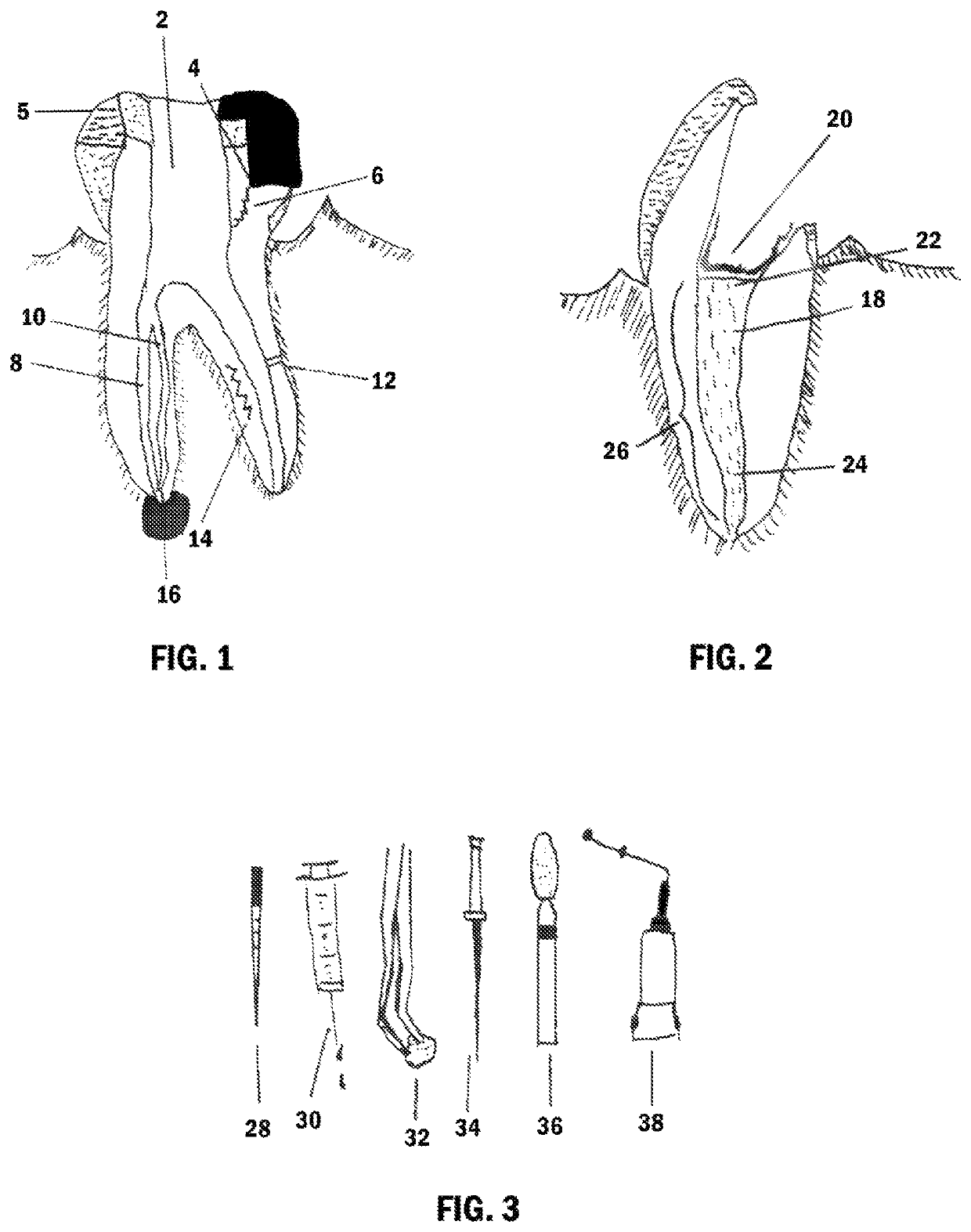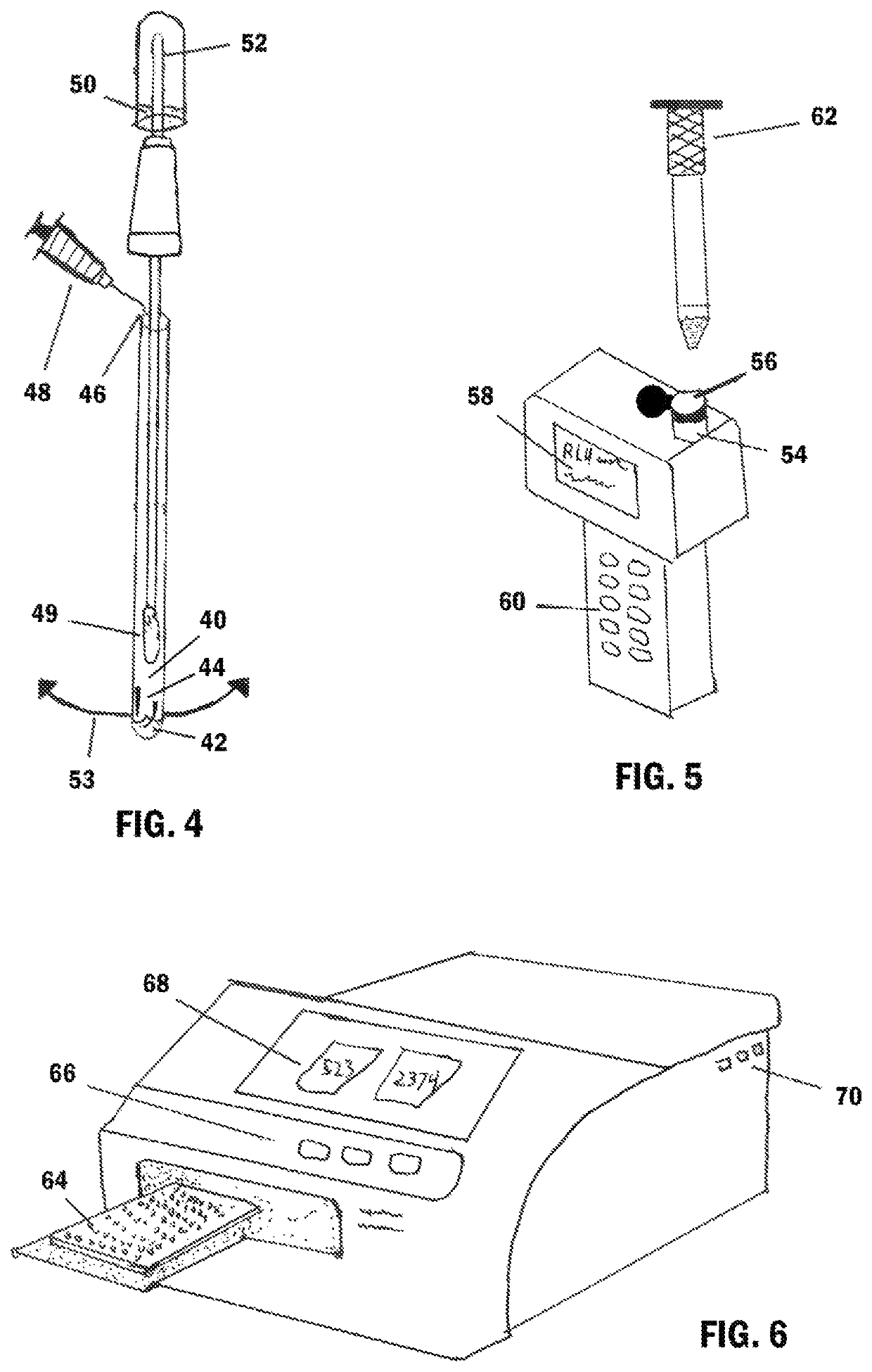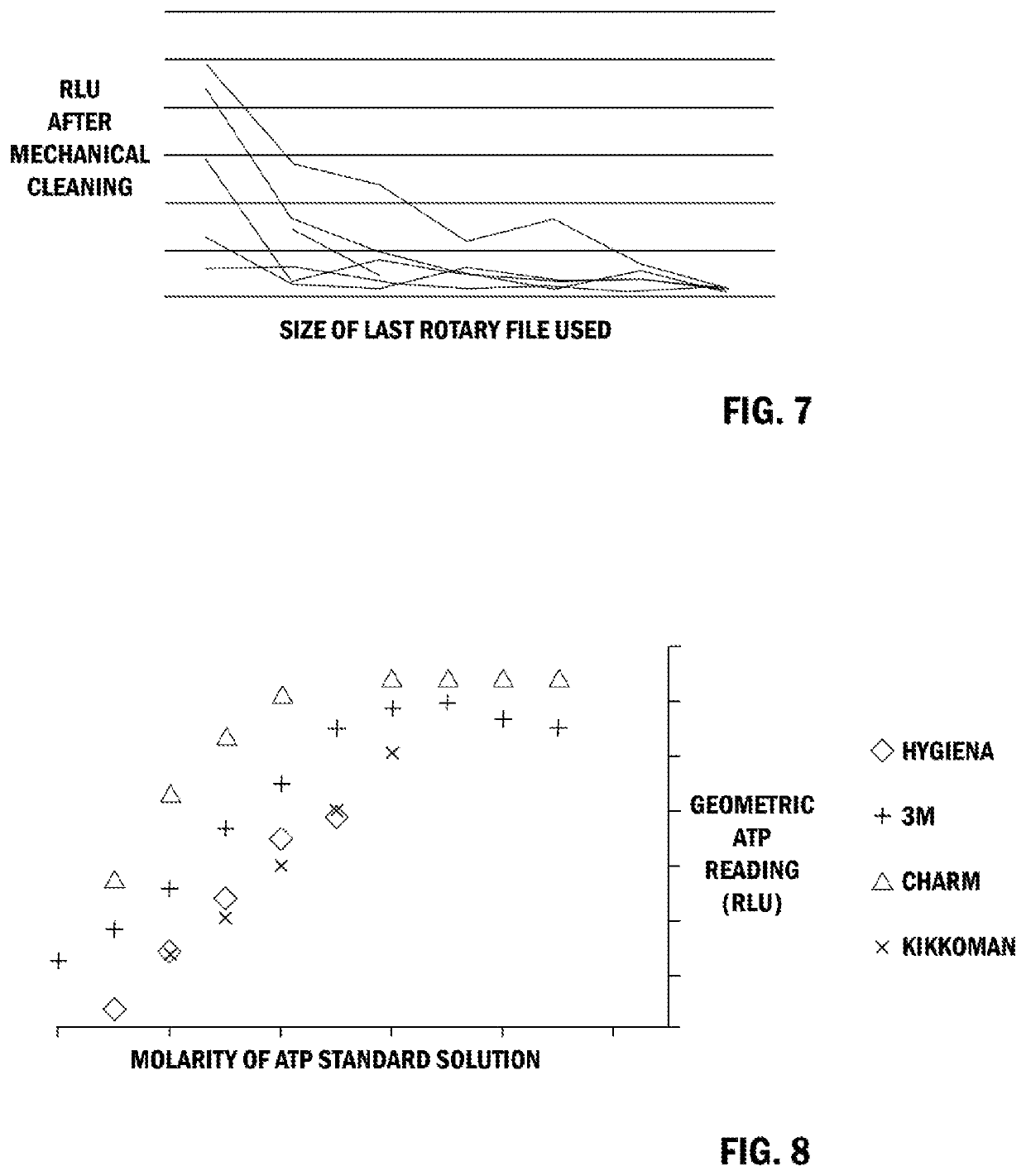System and method of in vivo testing for recently viable dental cellular debris
- Summary
- Abstract
- Description
- Claims
- Application Information
AI Technical Summary
Benefits of technology
Problems solved by technology
Method used
Image
Examples
Embodiment Construction
[0045]Certain terminology is used in the following description for reference only and is not limiting. The words “front,”“rear,”“anterior,”“posterior,”“lateral,”“medial,”“upper,”“lower,”“outer,”“inner,” and “interior” refer to directions toward and away from, respectively, the geometric center of the invention, and designated parts thereof, in accordance with the present disclosure. Unless specifically set forth herein, the terms “a,”“an,” and “the” are not limited to one element, but instead should be read as meaning “at least one.” The terminology includes the words noted above, derivatives thereof, and words of similar import.
[0046]The system and method of in vivo testing for recently viable dental cellular debris allows for a rapid, simple test to determine the level of cellular debris present in an endodontic cavity, endodontic exudate, tooth, or other dental restorative samples. Testing of a sample with a luminescence sampler and luminometer is used to determine the level of c...
PUM
 Login to View More
Login to View More Abstract
Description
Claims
Application Information
 Login to View More
Login to View More - R&D
- Intellectual Property
- Life Sciences
- Materials
- Tech Scout
- Unparalleled Data Quality
- Higher Quality Content
- 60% Fewer Hallucinations
Browse by: Latest US Patents, China's latest patents, Technical Efficacy Thesaurus, Application Domain, Technology Topic, Popular Technical Reports.
© 2025 PatSnap. All rights reserved.Legal|Privacy policy|Modern Slavery Act Transparency Statement|Sitemap|About US| Contact US: help@patsnap.com



